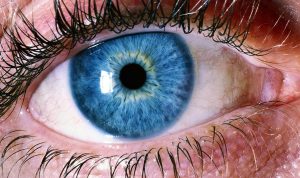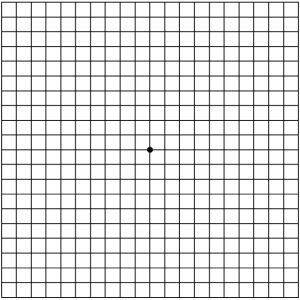3
Vision

People with vision problems are 2 to 3 times more likely to fall. This chapter will focus on the importance of vision problems, and how they can impact your risk of falling. We will learn some ways to screen for vision problems, and how to decrease your risk for falling related to vision issues.
Changes in vision occur as you age. Presbyopia, or not being able to see things that are close, starts in your mid 40s and continues in to your 60s as your eyes undergo a natural loss of focus. Other common vision problems include blurry vision and glare. You can have problems seeing when going from light to dark, or have poor depth perception. These conditions can increase your fall risk because they affect balance and decrease your ability to see clearly. Vision problems often lead to orientation and mobility problems, including:
- Loss of depth perception-making it difficult to tell how high or low a step or a curb may be
- Loss of contrast-making it hard to see curbs or steps, or not being able to tell the difference between a puddle or a hole in the sidewalk
- Seeing spots that block vision-making it hard to identify landmarks or see obstacles in your path
- Loss of side vision-making it hard to move around because you cannot see out of your periphery
Screening tests for vision problems
1: The Functional Vision Screening Questionnaire (FVSQ)
Functional Vision Screening Questionnaire
This tool was developed for use by anyone. The FVSQ is a 15 item yes/no screening tool to help you identify vision problems. The questions ask about everyday activities such as reading the newspaper or watching TV.
2: The Amsler Grid
The Amsler Grid is a simple vision screening test. It is a grid with a small dot located in the center. While staring at the dot, look for wavy lines and missing areas. This test is especially helpful for monitoring vision at home.
How to use the Amsler grid-video

It is extremely important to have your eyes checked at least once a year by an eye care professional, either an ophthalmologist or optometrist. They can find and treat problems and help to prevent further damage.
How to lessen your risk of falls related to vision problems
You have low vision if your vision affects your daily activities. It is a broad term that covers many types of vision loss including: reduced sharpness of vision, loss of side vision and reduced contrast. The following is a low vision tip sheet to give you ideas on how to make it easier to see in your home
Safety within your home
- Keep furniture in the same place and put items back where they belong
- Keep cabinet doors either fully closed or fully open. Doors that are partially open can cause injuries and accidents. You can also place contrasting tape on the doors for easier identification.
- Mark thresholds and steps with contrasting tape, paint or tread strips. At least mark the first and last steps of the stairway.
- Place contrasting doilies or fabric on the backs and arms of chairs
- Place a bright fabric or centerpiece on the coffee table. Or consider outlining the coffee table with contrasting tape.
Bathroom specific interventions
- Use a dimmer switch to control glare.
- Apply contrasting tape, or put a dark towel on the edge of the bathtub.
- Put a colored, non-skid mat or non-skid strips to the bottom of the bathtub to provide contrast and prevent falls
- Use towels that contrast with the wall color. Also use contrasting toilet seat covers, and tissue boxes.
Use this home safety checklist as a tool to check your home safety.
Media Attributions
- pexels-ismy-pointofview-271131-816734
- standard_Amslers_test
